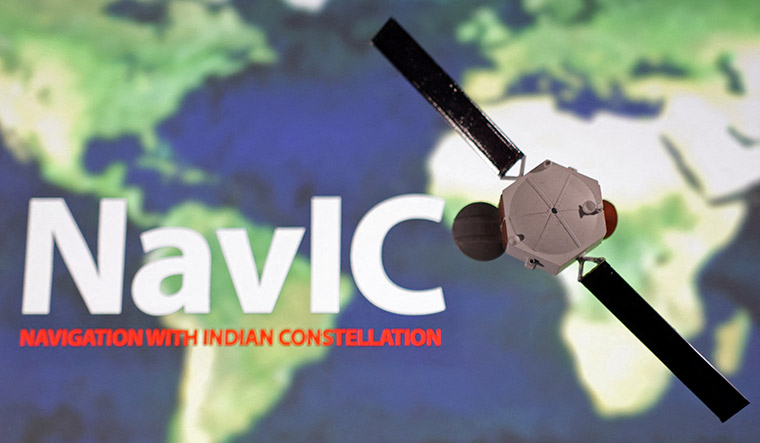Though an emerging leader in leveraging the potential of space for peaceful use such as remote sensing and unmanned exploration, and possessing significant launch capability, India surprisingly lags behind even Israel and Japan in exploiting space for military use and is constantly playing catchup in a fragile global security environment.
Contrary to what most people think, militarisation of space is as old as exploration of space. The US and Soviet Union sparked off the space race during the Cold War in the 1950s by first launching military satellites that would help them see further and better, and communicate better over the horizon and beyond the line of sight. Peaceful applications then followed, and both have grown in parallel over the years.
Militarisation of space and weaponisation of space are not the same. Militarisation is considered an essential step for furthering one’s strategies of deterrence by acquiring limited capabilities that enable offensive military operations across domains (land, maritime and air). On the other hand, weaponisation directly involves development, deployment and use of weapons positioned in space against targets located in space and on the ground. Directed Energy Weapons (DEW) and satellites with offensive capability (which can destroy enemy’s satellites or space vehicles) fall in this category.
Most countries have accepted the inevitability of the militarisation of space, but are vigorously opposed to its weaponisation. However, all the big powers and even some of the smaller space-faring nations have made significant progress in developing directed energy weapons and in deploying co-orbital satellites which have offensive capability. This move, in a way, may be considered an emerging paradigm of ‘coercion in space’ and possibly ‘Star Wars’.
BREACHING THE KARMAN LINE
It is commonly agreed that the Karman line marks the transition from the earth’s atmosphere, or air space as aviators call it, to space. It is about 100km from the earth’s surface. The difficulties of crossing this line by conventional aircraft made the region a ‘dark beyond’. It needed a special breed of people to generate ideas, and create technologies and vehicles to breach it. Thus came finally the astronauts, or the cosmonauts as the Russians call them, who would don their claustrophobic space suits, defy gravity and leap off into the unknown, reassured that the space scientist would get them back safely.
Aeronautical engineers, scientists from a few specialised disciplines and military pilots have emerged as core constituents of the military space community, albeit with a pronounced tilt towards air forces. Consequently, command and control of military space capabilities were largely entrusted to air forces, till China placed its military space assets under the Strategic Support Force (SSF) in 2015, and the US created a Space Force in 2019.
MILITARY SATELLITES
Military space assets largely comprise satellites that have sensors, radars, arrays, transponders and more, which are used (a) to support and enhance secure communications, (b) aid in navigation in the air and on the surface, (c) collect intelligence through surveillance and reconnaissance using different mediums (photo, infrared and hyperspectral are the most common), and (d) provide last-mile connectivity through data relays and links that has made targeting accurate. Today, it is all because of space assets that militaries are finding, fixing, engaging and destroying targets with extreme accuracy.
COMMUNICATIONS
Military communications satellites with sophisticated encryption are by far the heaviest and the most complex to design. Highly vulnerable and difficult to replace, their placement in space is largely in Medium Earth Orbit (MEO) and Geostationary Orbit (GEO), which is between 2,000km and 36,000km above the earth. Till date, India has launched 25 GSAT series of satellites, but only three of them (GSAT 6-A, GSAT-7 & GSAT-7A) are meant exclusively for military use. The main reason for India’s military shyness in space has been the fear of global sanctions that might affect our civilian space programme. The fear has not been misplaced. The nuclear tests in both 1974 and 1998 did entail sanctions on our civil space programme as well as our civil nuclear programme, forcing our scientists often to reinvent the wheel.
 India’s GPS: NAVIC was idle for three years because of teething problems, but is now up and running | Reuters
India’s GPS: NAVIC was idle for three years because of teething problems, but is now up and running | Reuters
The nuclear deal with the US, which largely took India out of the sanctions regime, has unshackled the Indian Space Research Organisation’s military space programme, which had taken baby steps in 2001 with the launch of a dual-use Technology Experiment Satellite (TES). India should now seek to have an inventory of a minimum of one main and one standby communications satellite (to cater for redundancies and contingencies) for each of the three defence services. Considering the average life of a satellite is just 12 to 15 years, and that it takes a year from the planning stage to the launch, it will take about 10 years to meet this aspirational requirement. A concurrent challenge for ISRO will be to make available heavy launcher vehicles such as the enhanced GSLV (Geosynchronous Satellite Launch Vehicle) in an expedited time-frame.
POSITION, NAVIGATION AND TIMING
The NAVSTAR GPS, an American constellation of 24 satellites placed in geostationary and geosynchronous orbits, about 20,000km from earth, revolutionised and simplified navigation. It operates on two distinct frequencies, one for civilian use and the other for secure military use of the US and its allies across the world. Not to be left behind, the Russians launched their own GLONAAS network of 24 satellites; the European Union followed suit with their Galileo System, and the Chinese with their Beidou constellation. In 2017, ISRO placed its own constellation of seven Position, Navigation and Timing (PNT) satellites with a set of secure frequencies for strategic applications, called NAVIC, in geostationary and geosynchronous orbits at a height of 36,000km, well above the NAVSTAR GPS constellation. NAVIC was idle for three years because of teething problems, but is now up and running with reasonable efficiency. The coverage of the NAVIC stretches from the Gulf of Aden to the Malacca Strait, which has been stated to be the zone of India’s strategic interest. Indeed, there will be a strategic imperative to expand its coverage in the decades ahead.
INTELLIGENCE, SURVEILLANCE AND RECONNAISSANCE
The third and most critical of all space assets in modern warfare are satellites that offer nations a ‘persistent stare capability’ that makes battlespace transparency possible through effective intelligence, surveillance and reconnaissance. It is in this area that China has a commanding lead over India with its constellation of Yaogan, Ludikancha and Gaofen satellites. These satellites have Electronic Intelligence (ELINT) capability to monitor enemy radar transmissions and communications; and electro-optical, synthetic aperture radar and infrared capabilities to accurately map enemy territory and locate even constantly moving targets in real time. For these purposes, India uses fewer than 15 dual-use CARTOSAT, RISAT and EROS satellites, which are smaller than communications satellites, and are placed in a Low Earth Orbit (LEO) of 200-500km. This is against an assessed Chinese inventory of over 100 satellites that includes the recently launched data relay satellites with sufficient bandwidth to support the streaming of voice, data and images.
Policymakers have recognised this shortfall. Statements from the government and the ISRO chief indicate the opening of this sector to private players who can produce this family of satellites. It is projected that 50 such military and dual-use satellites, armed with a variety of sensors and radars, will be launched over the next five years. This should significantly shrink the space asymmetry with China over the next decade. Of course, it is important not to get into a costly space race with China, but to resort to a strategy that will support robust deterrence and responsive offensive operations.
SPACE SITUATIONAL AWARENESS
The last and emerging segment in the militarisation of space is the one that provides Space Situational Awareness (SSA). In simple terms, SSA is the ability to keep track of everything in space including space debris, rogue satellite behaviour, anti-collision mechanisms and possible signs of weaponisation by others. With only nascent capabilities in this realm, India largely relies on friendly countries and strategic partners such as the US with its famed North American Aerospace Defense Command (NORAD) facility. However, there are plans to install multi-object tracking radars and optical telescopes on the Indian mainland to enhance this capability.
TRAINING, STRUCTURES AND CHALLENGES
By no yardstick is it going to be a smooth ride towards building a credible military space capacity. There are several elephants in the room―India’s fractured organisational culture, existence of multiple stakeholders and turf battles among them for command and control of the ‘high ground.’ After decades of monopoly, ISRO has wisely ceded some space to private players, who have shown much enthusiasm in building and launching military satellites. The users will be many―the three services, the Coast Guard, Central Armed Police Forces and the National Disaster Response Force, a segment of India’s intelligence agencies represented by the National Technical Research Organisation and the Aviation Research Centre.
Just as navies across the world have succeeded in merging their surface and sub-surface operational domains after the advent of submarines into one contiguous zone, the IAF, too, has been focusing on the contiguous nature of air and space, and has been ambitiously seeking an aerospace command since 2009. India’s entry into the Ballistic Missile Defence (BMD) club with its ASAT (anti-satellite) test in 2019 presents fresh challenges in command and control issues. The IAF feels that it is only logical that BMD blends into the existing air defence architecture to avoid duplication of command and control structures. It has now stepped up training in space-related disciplines, and is building competencies for the future in concert with knowledge partners such as ISRO, DRDO, NALSAR and National Institute of Advanced Studies. This includes training pilots for India’s first manned space flight, studying propulsion and understanding space laws and regulations.
However, the diverse inventory of stakeholders in space has resulted in the domain emerging as among the three integrated segments, the others being cyber and special forces. All three have been assigned to the chief of defence staff currently. There is also a reluctance to club the military requirements for space capabilities with the strategic requirements, since the latter has separate stakeholder organisations such as Defence Space Research Organisation (the space arm of DRDO), Strategic Forces Command and the intelligence agencies. The Defence Space Agency, the current nodal agency for military space assets, is lightweight in its structure and will not meet the requirements for India’s future military space requirements. Given all this, it would be interesting to see how the command and control over military space assets emerge in the coming years and when an aerospace/space command comes up. Suffice to say, too many chefs will spoil the broth.
The writer is a military historian, author and aerospace strategist. He was the Assistant Chief of Air Staff (Space and Doctrine) in 2011-12.



